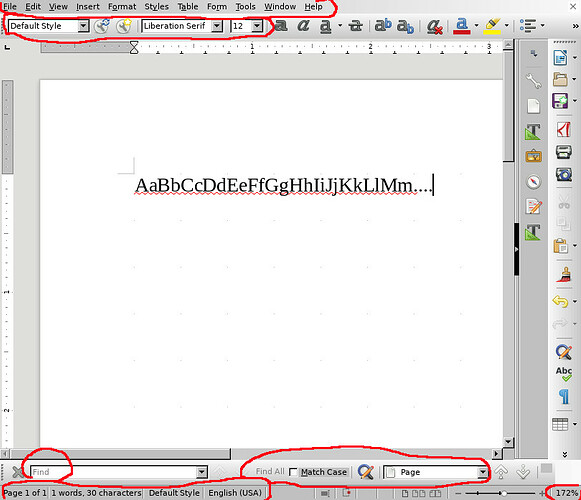Hi, I’m running LO 6.1.5.2 on debian stretch with fluxbox.
I would like to change the LO gui’s fonts, specifically I would like to make them bigger. In case it’s not clear what I mean by the gui’s fonts, it’s the ones for the text circled in red in the image:
I realize that LO does not support changing its gui’s fonts independently and instead gets them from its environment. I would imagine that if LO cannot find compatible fonts in the proper locations it falls back on some font that was baked-in into its code.
My conjecture is that this may be my circumstance. Fluxbox does not use gtk; predictably changing fluxbox’s fonts has no effect on LO. Likewise, changing X’s font with xfontsel has no effect on LO either.
I don’t mind installing gtk libraries if it’ll help me with this.
So my first question is: Does my version of LO in fact rely on gtk for its fonts? If so, does the version matter?
My second question is: Assuming LO does rely on gtk for its fonts. Which config files does it read? The one in /usr/share? Or the one in /etc? Or the local user’s?
Thanks very much for any help.


